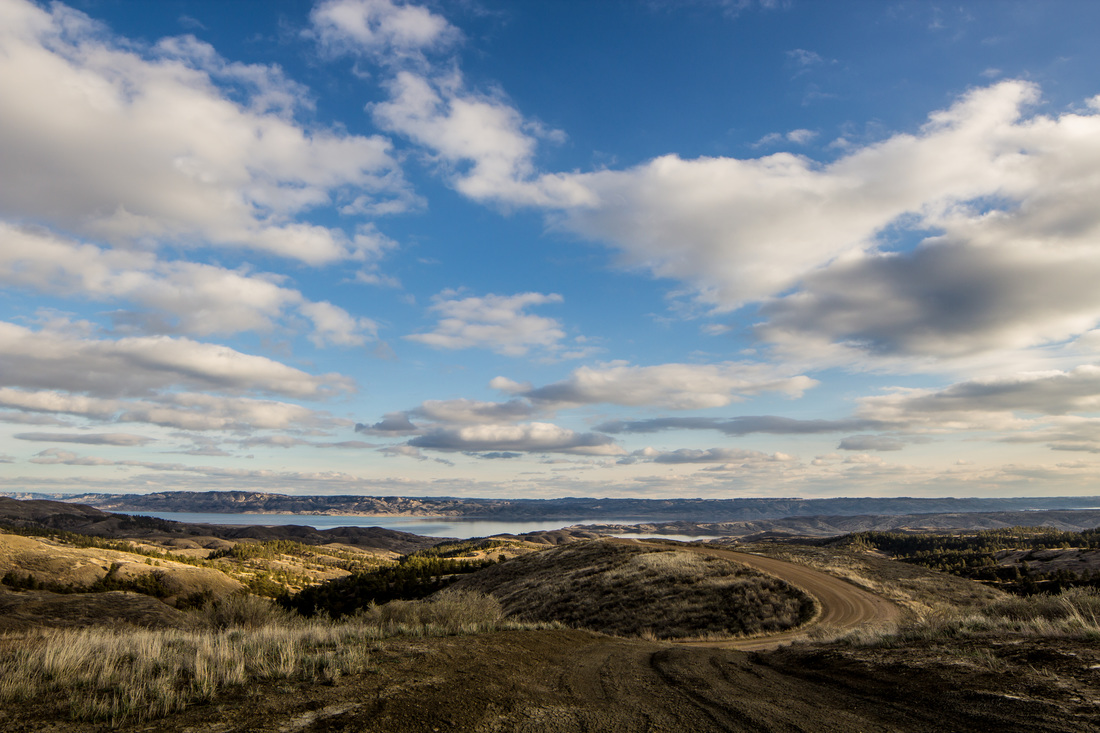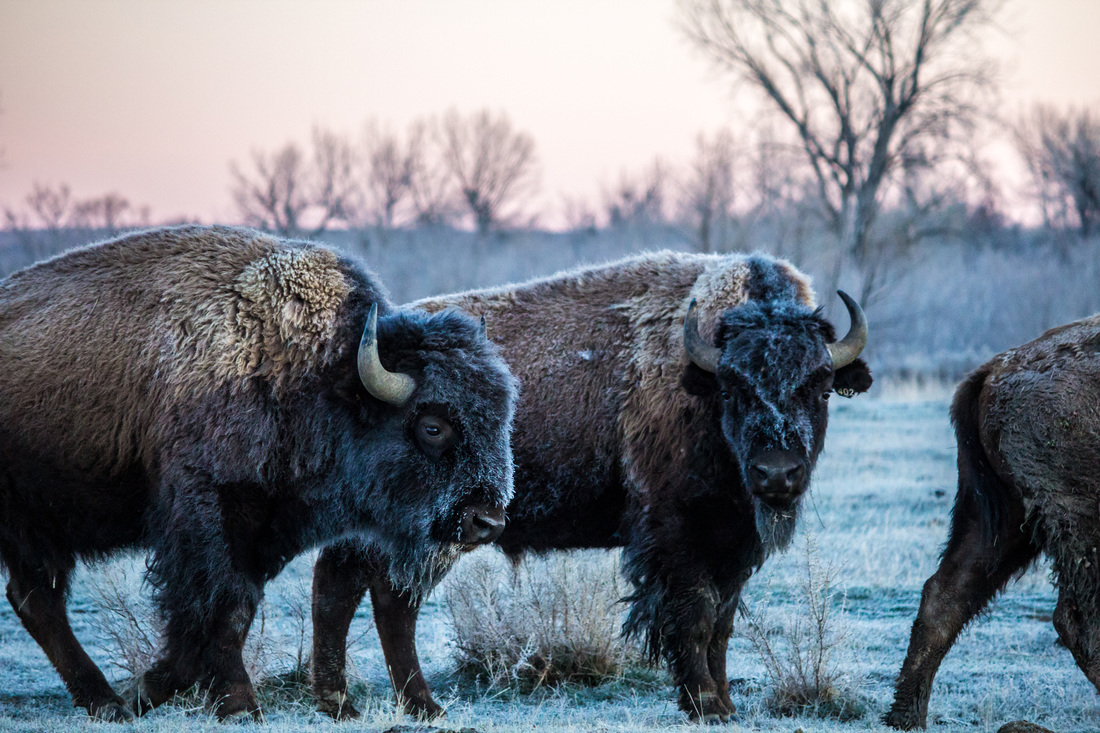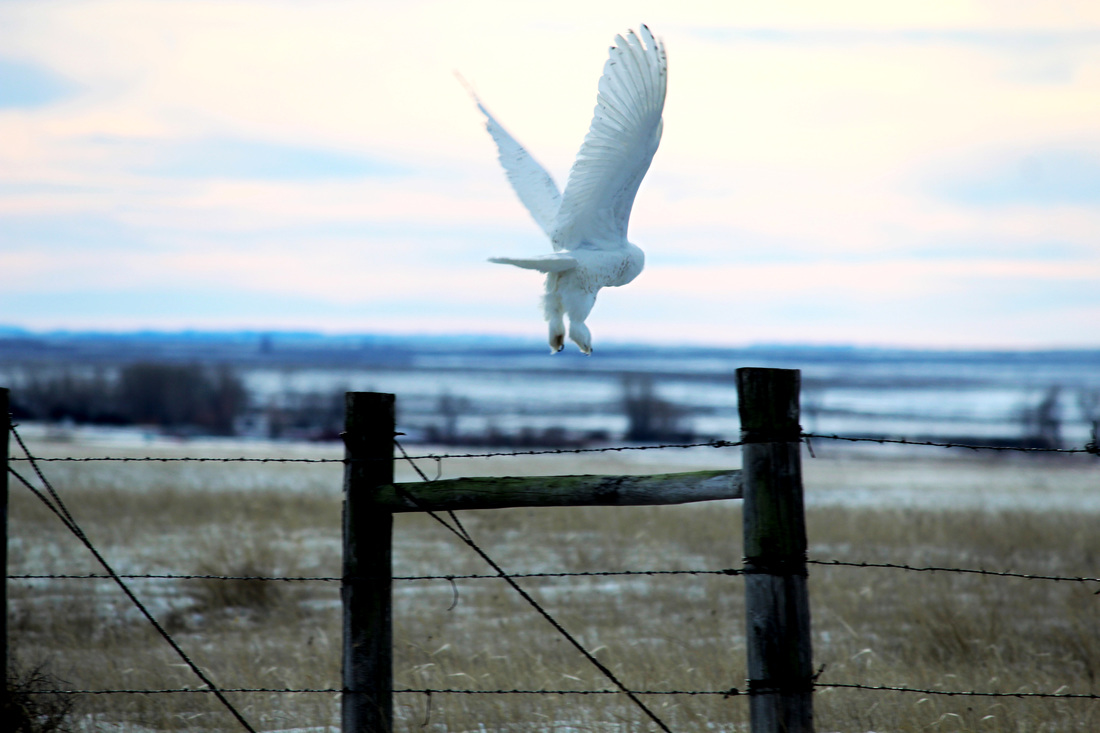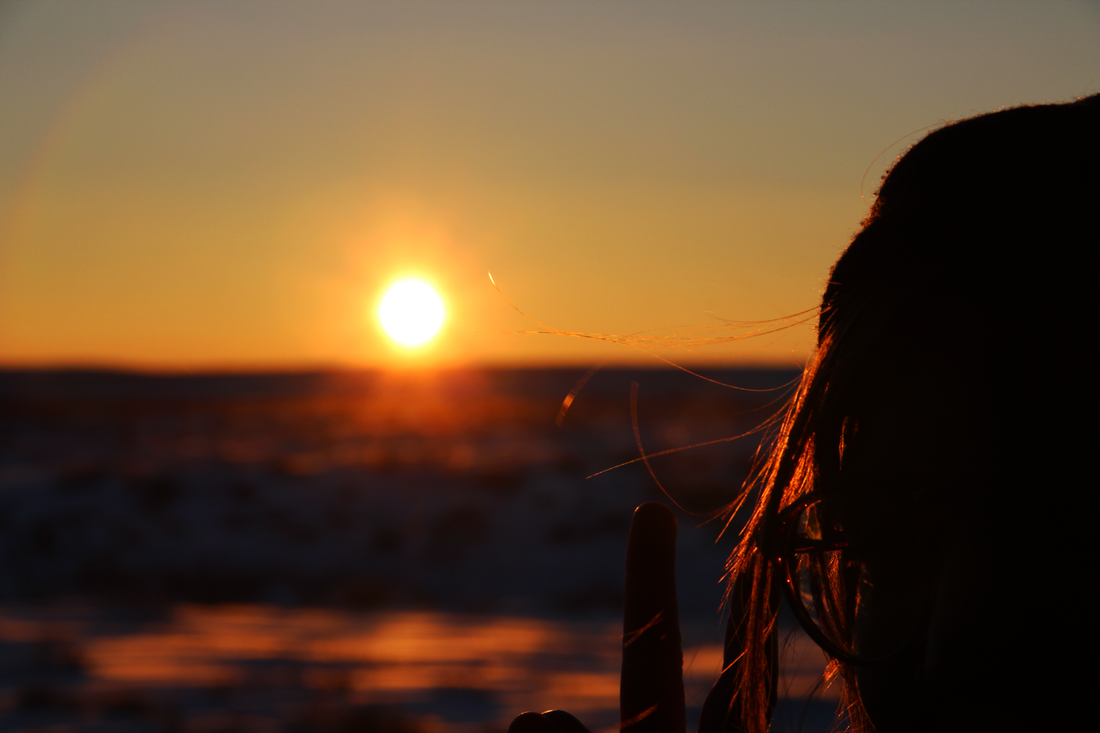Writing by Sydney Toni
Photos by Deniz Bertuna
ASC Landmark crew
Photos by Deniz Bertuna
ASC Landmark crew
Our day starts at eight o’clock. As the rest of the crew gathers in the kitchen to pull together breakfast, or pull themselves together with coffee, I step outside onto the porch of the Enrico Science Center. The sun has yet to crest the small hill that lies directly to the east, and I watch two white-tailed deer skip away across a nearby field. It’s windier than yesterday. I can hear the low singing of the wind in the creek bed.
The whole landscape is an instrument, played by the air, the animals, even us. The staccato burst of a flushed sharp-tailed grouse, a sustained pause between bursts of wing beats. The lumbering gallop of a bison provides the bass. The prairie is chopped up by notes and songs played again and again – the tracks that run in incomprehensible loops, with patches of snow cleared by foragers and our own footprints covered here and there by drifts. At dusk, the coyotes howl somewhere unseen.
The joy in the Landmark project comes from moving slowly through the landscape, taking note of its routines and outbursts. We are the third year of walkers, seers, curious explorers. All we can do is attempt to be present.
On our first day, we saw pronghorn move like water, condensing into a single stream running away across the ridge. And like water, upon hitting an obstacle they pooled together and turned back in unison. I do not know if the pronghorn are always in this spot, if they are fewer than last year, or why they are here, exactly here, at all. But, through a series of numbers, cardinal directions, and phrases entered into our data sheets, my pronghorn contribute to what the prairie might be. With a small army of volunteers walking the American Prairie Reserve almost every day all year, storytelling and data collection begin to merge.
It is the seeming unpredictability of the non-human world that draws many of us outside. Time feels vivid, even after dragging your boots up a series of muddy hills that mark your ninth mile of the day. The world seems both fleeting (fumbled attempts to photograph the mule deer bouncing up the ridge) and bigger than time itself. It is humbling to walk all day and catch only snatches of mule deer in the distance or the odd short-eared owl. It reminds us that the landscape is vast and our path is narrow. As a newcomer, it would be foolish to make assumptions from a single wildlife sighting. Standing in the lee of some hills as other more industrious crew members retrieve data from a wildlife trapping camera, I wonder if the coyotes are howling today for the pronghorn that ducked under the fence not a few miles back. This hole in my knowledge – why do coyotes howl, for whom – tugs a little at my anxious heart. I crave intimacy when I have only flashes of fleeing deer and glimpses of startled jackrabbits. It is this tug, I suppose, that captures the importance of spending time in wild spaces – if we never know, it is hard to care.
Learn more about Landmark and other ASC projects on our website, the Field Notes blog, and by following us on Facebook, Twitter, and Instagram.





